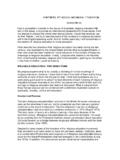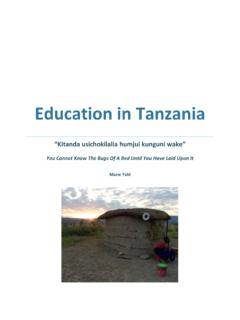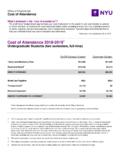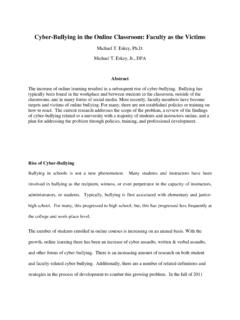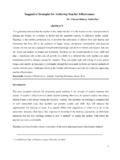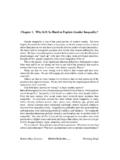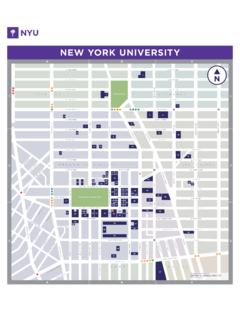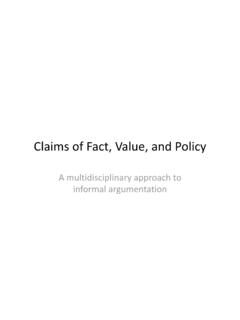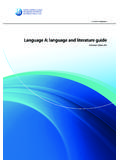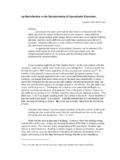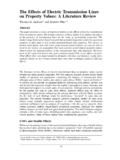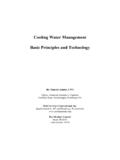Transcription of Signalling Power of Dividend on Firms’ Future …
1 1 [EvergreenEnergy International Interdisciplinary Journal, New York, March 2009] Signalling Power of Dividend on Firms Future Profits A Literature Review by PURMESSUR Rajshree Deeptee * BSc (Hons) Banking & International Finance (Email: The University of Nottingham Nottingham University Business School (NUBS) and BOODHOO Roshan ** ASc Finance, BBA (Hons) Finance, BSc (Hons) Banking & International Finance (Email: ; Tel: +230-7891888) The University of Nottingham Nottingham University Business School (NUBS) ABSTRACT Since decades, many researchers have argued that the Dividend policy decisions of firms are very important mainly due to the signaling effect they have on the firm s Future performance. The paper presents empirical findings on the signaling effect of dividends while taking into account the different theories on Dividend policy. Keywords: Dividend ; Dividend Policy ; Dividend and Taxation ; Signalling Mechanism ; Agency Theory * Ms Purmessur is currently completing a Master of Arts in Finance and Investment at The University of Nottingham.)
2 **Mr. Boodhoo is currently completing a Master of Arts in Finance and Investment at the University of Nottingham as well as an Executive Master of Business Administration (Finance Management) at the Institute of Business Management Studies. 1. Introduction Dividends are a distribution of a company s profits. The amount received as dividends depend on the number of shares one holds. Firms issue equity which takes the form of either common shares or preferred shares. Each preferred share is normally paid a fixed annual Dividend . In contrast, dividends obtained from common shares may fluctuate with the firm s profits. Hence a company must determine the amount of profits to be distributed as dividends to its shareholders and this procedure is more commonly referred as the Dividend policy of the firm. This paper is a literature review on the different theories related to Dividend policy and it 2supports the hypothesis that Dividend changes convey information about a firm s Future profits.
3 2. Corporate Dividend Policy Decisions The Dividend policy decision for a firm is very important and thus, the way managers go about making Dividend policy decisions and whether or not they follow a precise set of guidelines or specific strategies to make these decisions will impact on the value of the firm. It can also have an impact on the Future performance of the firm. Lintner (1956) carried out a research to determine how senior managers (top management level) proceed to formulate the Dividend policy decisions. He estimated a model which consisted of the following variables: earnings stability, plant and equipment expenditures, willingness to use external financing, firm size, ownership by control groups and use of stock dividends. A sample of 600 listed companies was used in this study. He made use of interviews to collect the data and it is understood that not all the 600 firms manager(s) were interviewed in this study.
4 From his findings, he explains that managers mostly looked at current earnings and target level of Dividend payout to make the Dividend decision. Marsh and Merton (1987) summarised the other findings of Lintner (1956) on how managers determine the level of Dividend payout as follows: 1. Managers tend not to make Dividend decisions that might have to be reversed in the near Future . 2. The current year s Dividend payout will not be affected by the profitability level of the same period (T) but can have an impact on the profitability level of the next period (T+1) 3. Managers place their main focus on the change in existing Dividend payout level rather than absolute level. 4. Firms have longer Dividend payout ratios. 5. Firms repurchase stocks when they have accumulated a large amount of unwanted cash or wish to change their capital structure.
5 Based on his findings, Lintner (1956) developed a Dividend model. The Dividend model described the relationship between the previous period s Dividend , the current period s Dividend and the Future targeted Dividend payout in the next period. The estimated equation the model is as follows: DIVt DIVt-1 = adj x (DIVt+1 x EPSt DIVt-1) 3where: DIVt is the Dividend for the current period, DIVt-1 is the Dividend for the previous period, Adj is the adjustment rate DIVt+1 is the target Dividend ratio and EPSt is the earning per share for the current period. However, from a more recent literature, namely Kumar and Lee (2001), the authors claimed to have developed an empirical model which was more efficient than Lintner s model. However, it must be noted that not much researchers have tested the model of Kumar and Lee (2001) and hence, cannot really be argued to be a better model.
6 With regards to the impact of Dividend policy decision on investment, it is understood that firms should take all projects with a Net Present Value (NPV). However, an issue is that if management put more emphasis on Dividend policy to such an extent that it eventually dominates investment policy decisions, it could be argued that NPV projects or projects creating firm value be cancelled or delayed for a later time. By cancelling or delaying positive NPV projects, this will obviously have an adverse effect on the Future expected profits of the company. Fama (1974) carried out a research on the relationship between investment decisions and Dividend decisions. His findings revealed that investment decisions and Dividend decisions are not correlated; that these two types of decision making do not affect each other.
7 3. Dividend Irrelevance Proposition Modigliani and Miller (1958, 1961), hereafter referred to as MM, put forward the irrelevance theorems, more commonly known as the MM theorems and these form the foundation of modern corporate finance theory. The two main conclusions that are drawn from the MM theorems are that firm value is dependent on its current and Future free cash flow. Secondly, the level of dividends (or Dividend policy) does not affect firm value given that firms maximise their value through investment. The difference between equity issued and payouts of the firm is equal to its free cash flow. Hence, Dividend policy is irrelevant when it comes to affecting firm value. The studies carried out by Black and Scholes (1974) and Miller and Scholes (1982) are in line with the propositions of the MM theorem. Those opposing the propositions can be classified into two groups.
8 For instance, one group would be those who argue that a high Dividend payment increases share price which in turn increases firm value and therefore decreases the cost of equity 4(for example, Graham and Dodd, 1951). The other group gave evidence that higher Dividend payout lead to higher required rate of returns which adversely impacts on share price (for example, Blume, 1980). In many cases, the MM theorems have been argued to be irrelevant mainly because of the assumptions based on a perfect world without taxes and no market imperfections. However, in the real world, these assumptions do not hold. For example, companies pay corporate taxes and there are many imperfections which provides arbitrage opportunities. Various theories have been developed with the relaxation of MM assumptions. The theories had with main objective to explain why companies pay dividends.
9 Black (1976) argued that their may be infinite reasons of paying dividends. According to this researcher, dividends may simply represent the return to the investor who faces a particular level of risk when investing in the company. Also, he mentioned that companies pay dividends as a means of rewarding existing shareholders but the main argument was that dividends were paid so that the company is seen as a worthwhile investment. In this case, investors will be willing to acquire the firm s shares even if they are sold at a higher or premium price. 4. Dividends and Taxation Taxation is one the critical factors that affect firm value and Future expected profits. For example, discounted expected after-tax cash flows can be used as a determinant for the market value of a firm. In this respect, differential tax treatment of capital gains relative to the dividends can influence the after-tax returns of investors and in turn affect the willingness of investors to receive dividends (demand for dividends).
10 Economists have concluded that personal investment decisions and corporate Dividend decisions are both affected or influenced by taxes. Brennan (1970) was the first researched who investigated the relationship between Dividend yields and risk adjusted returns in the context of taxation. He proved that using the Capital Asset Pricing Model (CAPM), the pre tax excess return on a security is positively and linearly related with the Dividend returns and systematic risk of the security. In other words, the tax disadvantages of dividends faced by investors in general is compensated by higher pre-tax returns. These findings were further supported by Litzenberger and Ramaswamy (1979). However, the correlation of share returns and Dividend yields is very complex and cannot be explained solely by tax effects (Blume, 1980). On the other hand, Blume (1980) also explained that Dividend 5payouts have a positive impact on a company s Future profits.
